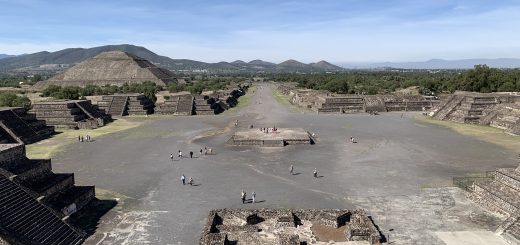Texas and the Mexican War by Charles M. Robinson III
In between the Texas Revolution (1835-36) and the U.S. Civil War (1861-65), there was the war between the United States and Mexico (1846-1847).
The United States fought a war with Mexico for several reasons: annexation of Texas to the United States, the American belief in Manifest Destiny, political instability in Mexico, and a desire for war in both countries.
Thus begins Charles M. Robinson III’s short (91 pages) overview, Texas and the Mexican War. Mr. Robinson reviews not only the actions of the armies of both sides, but the political activities, which echo those occurring in our own times. It focuses mainly on those events that affected or were affected by Texans. The majority of the book follows the path of General Zachary Taylor, from gathering troops in Louisiana to support Texas in anticipation of annexation through moving his troops from Corpus Christi up to the Nueces River boundary (where Mexico believed the border was) and down to the Rio Grande (where the United States wanted the border to be). Joined by Texas rangers, recruits and volunteers, Taylor wins the battles of Palo Alto and Resca de la Palma. These victories caused current Mexican President Paredes to lose favor, and also prompted U.S. politicians to meddle in the war, with an envoy (Mackenzie) visiting exiled Mexican General Santa Anna in Cuba.
Mr. Robinson reviews not only the actions of the armies of both sides, but the political activities, which echo those occurring in our own times. It focuses mainly on those events that affected or were affected by Texans. The majority of the book follows the path of General Zachary Taylor, from gathering troops in Louisiana to support Texas in anticipation of annexation through moving his troops from Corpus Christi up to the Nueces River boundary (where Mexico believed the border was) and down to the Rio Grande (where the United States wanted the border to be). Joined by Texas rangers, recruits and volunteers, Taylor wins the battles of Palo Alto and Resca de la Palma. These victories caused current Mexican President Paredes to lose favor, and also prompted U.S. politicians to meddle in the war, with an envoy (Mackenzie) visiting exiled Mexican General Santa Anna in Cuba.
Mackenzie advised Santa Anna that the navy was ordered to allow him through the blockade, and would suspend all operations except the naval blockade, once Santa Anna returned to power and announced that Mexico would negotiate. U.S. terms, which Mackenzie was not supposed to reveal but did anyway, …
Of course, Santa Anna, upon his return, follows public sentiment and continues the war. General Taylor, meanwhile, wins a battle at Monterrey but allows the larger Mexican army to leave as terms of their surrender (as Taylor’s smaller force could not defeat them without these terms). Santa Anna, because of public furor, leads an army up to meet Taylor (whose numbers were depleted by President Polk who have given many of his troops to General Scott for the invasion of Veracruz and subsequent occupation of Mexico City). Taylor meets and defeats the much larger army of Santa Anna at the Battle of Buena Vista, where Santa Anna again demonstrates “…A brilliant strategist and planner, he was a poor field commander. His forces outnumbered Taylor at least four to one.”
The last chapter of the book briefly shows Texas with General Scott on his campaign from Veracruz to Mexico City. But again, the majority of the book (Chapters 2-7) focus on Taylor’s campaigns.
The book does offer some interesting insights, describing parallels (like the intervention of the government getting Santa Anna to return) of this war and it’s politics with many of our own time. For example:
By allowing Polk to provoke a war and then accepting it as fait accompli, Congress had abdicated its responsibility to serve as a check on executive power.
“It sets the example,” he wrote, “which will enable future Presidents to bring about a state of things, in which Congress shall be forced, without deliberation, or reflection, to declare war, however opposed to its convictions of justice or expediency.” Similar arguments would be raised again more than a century later in the large-scale, undeclared, conflicts in Korea and Vietnam.
This echoes the sentiment lately on the “undeclared conflicts” of our current time.




